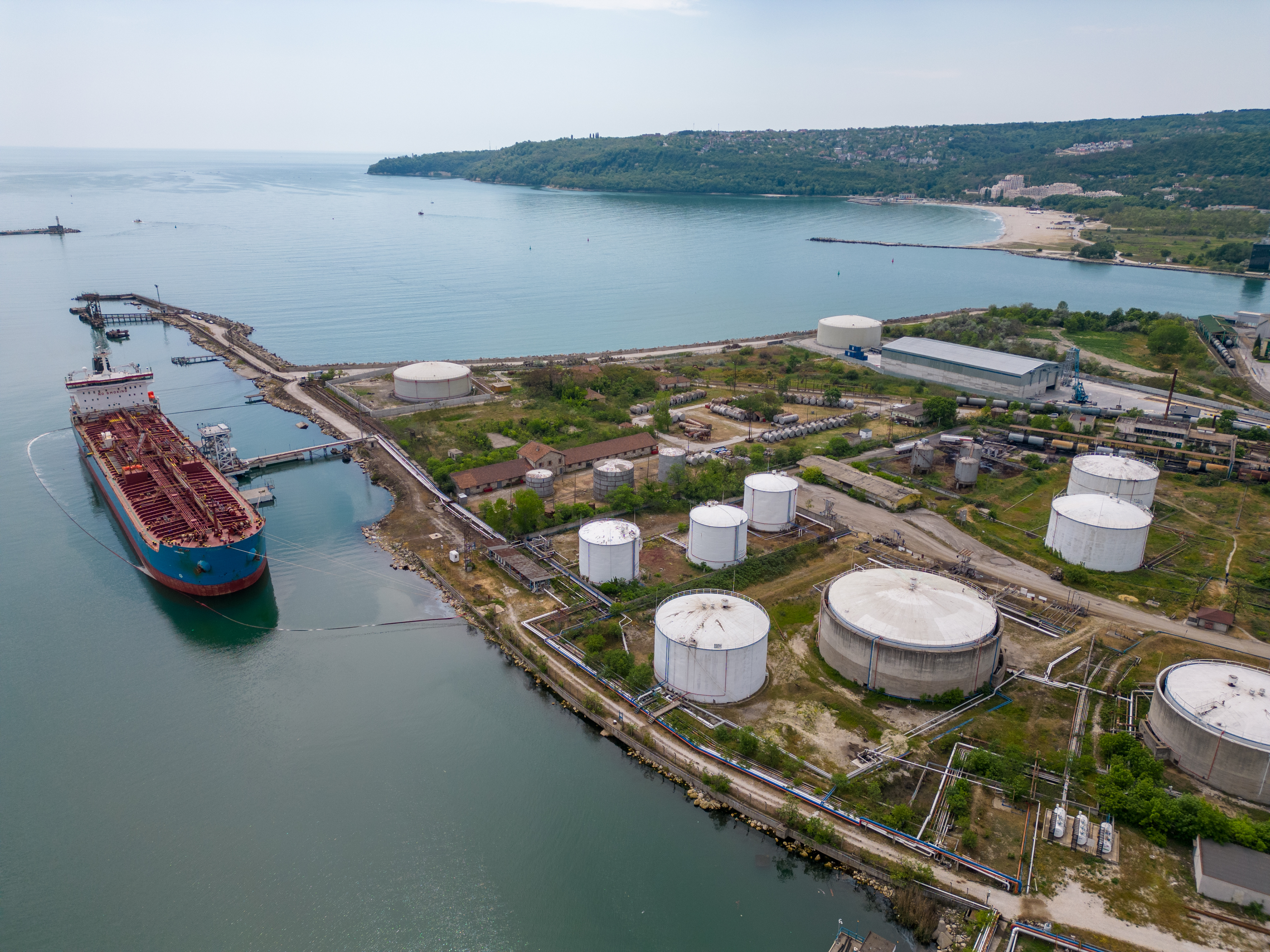
NEWS
What Types of Liquid Bulk Are Stored at Terminals?
In the world of liquid bulk storage terminals play a key role in handling and distributing essential commodities. From crude oil to edible oils, these terminals manage a wide array of liquid products, ensuring they are stored safely and transported efficiently. This article dives into the types of liquid bulk stored at terminals and the unique requirements for each in the liquid bulk maritime industry.
What is Liquid Bulk Storage?
In a recent article we explained what liquid bulk cargo refers to the containment of large volumes of liquid materials in specialised facilities known as terminals. These sea- and inland terminals are equipped with tanks, pipelines, and sophisticated systems to handle various liquid products efficiently.
Key Features of Liquid Bulk Terminals:
- Tank Configurations: Tanks come in various shapes and sizes, such as cylindrical and spherical designs, tailored for specific liquids.
- Loading/Unloading Systems: Pumps, pipelines, and dedicated docks facilitate smooth transfer.
Temperature and Pressure Control: Ensures product integrity, particularly for sensitive or hazardous liquids. - Global reliance on liquid bulk terminals underscores their importance in industries such as energy, agriculture, and chemicals.
Types of Liquid Bulk Stored at Terminals
Liquid bulk encompasses a wide range of products, categorised based on their composition and end use. Below we have listed the main types stored at terminals:
Petroleum Products
Petroleum products dominate liquid bulk storage due to the global demand for energy.- Crude Oil: Stored in massive tanks, crude oil requires advanced safety systems to prevent leaks or spills.
- Refined Fuels: Includes gasoline, diesel, and jet fuel. These products are stored in pressurized or temperature-controlled tanks.
- Liquefied Natural Gas (LNG): Stored in cryogenic tanks at extremely low temperatures to maintain its liquid state.
Chemical Products
The chemical industry relies heavily on liquid bulk terminals for safe storage and handling.
- Acids and Alkalis: Products like sulfuric acid and caustic soda require corrosion-resistant tanks.
- Solvents: Flammable liquids like acetone and ethanol are stored in explosion-proof facilities.
Food-Grade Liquids
Food-grade liquids demand stringent hygiene and quality standards.
- Vegetable Oils: Used in cooking and food production, these oils are stored in stainless steel tanks to prevent contamination.
- Fruit Juices and Dairy Products: Require temperature-controlled environments to maintain freshness.
Other Specialized Liquids
- Liquid Fertilizers: Stored in agricultural hubs to support farming activities.
- Ethanol: Used as a biofuel, ethanol is stored in sealed tanks to minimize evaporation losses.
Key Considerations for Liquid Bulk Storage
Storing liquid bulk involves several critical considerations to ensure safety and efficiency:
1. Safety Protocols
- Hazardous Materials: Products like LNG and chemicals pose risks of fire or explosion, necessitating robust safety measures.
- Emergency Response Systems: Includes fire suppression systems and spill containment plans.
2. Environmental Regulations
- Compliance with environmental laws, such as the Clean Water Act, to prevent contamination.
- Implementation of double-walled tanks and spill prevention systems.
3. Temperature and Pressure Management
- Maintaining stable conditions to preserve product quality.
- Use of insulation and heating systems for temperature-sensitive products.
Challenges in Storing and Transporting Liquid Bulk
Handling liquid bulk comes with its share of challenges:
- Risk of Contamination: Cross-contamination between incompatible liquids can result in significant losses. Proper cleaning protocols are essential.
- Maintenance of Storage Tanks: Regular inspections are necessary to prevent corrosion and leaks, which can compromise safety and product quality.
- Logistics and Transportation: Coordinating the transport of liquid bulk requires specialized vehicles, such as tanker trucks or ships, and efficient scheduling to minimize delays.
Conclusion
Liquid bulk storage terminals are indispensable in supporting global trade and industry. From energy products to food-grade liquids, these facilities handle diverse materials with precision and care. As the industry adopts sustainable practices and innovative technologies, the future of liquid bulk storage looks promising, ensuring safety, efficiency, and environmental responsibility.
FAQs
1. What are the main types of liquid bulk stored at terminals?
Liquid bulk includes petroleum products, chemicals, food-grade liquids, and specialized products like fertilizers and ethanol.
2. How are liquid bulk terminals designed?
Terminals feature specialized tanks, pipelines, and safety systems tailored to the properties of the stored liquids.
3. What safety measures are necessary for storing hazardous liquids?
Safety protocols include fire suppression systems, spill containment, and regular tank inspections.
4. Why is temperature control important in liquid bulk storage?
Temperature control preserves the quality and stability of sensitive liquids, such as LNG and food-grade products.
5. What is the role of automation in liquid bulk terminals?
Automation enhances efficiency and safety by streamlining operations like loading, unloading, and monitoring tank conditions.
6. What are the environmental impacts of liquid bulk storage?
Improper storage can lead to spills and contamination, highlighting the need for strict compliance with environmental regulations.
7. How are food-grade liquids stored differently?
Food-grade liquids require hygienic, stainless steel tanks and temperature-controlled environments to prevent spoilage.

